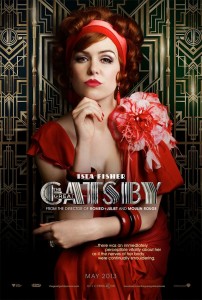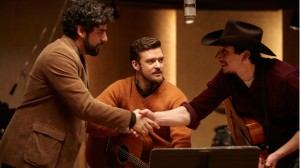Nextflix Micro-Genres Are Amazing
Posted on January 6, 2014 at 8:00 am
The closing of the last Blockbuster stores has led to some “end of an era” pontificating and even some meta “end of the era of end of the eras” commentary from Monica Hesse in the Washington Post. For me, it is a chance to think about the moment that got me started as The Movie Mom — watching parents at Blockbuster ask the teenaged clerks if an Adam Sandler movie was appropriate for kids.
I usually had a good idea of what I was looking for, but most of the patrons would stand glassy-eyed in front of the “new releases” shelf or possibly go straight to “action/adventure” or “comedy.” The five or six categories were not very helpful. There are lessons to learn from Blockbuster about the risks of disruptive new technologies. Why didn’t Blockbuster invent Netflix? The ease of ordering by mail and then, even easier, just hitting a button on the computer for immediate streaming could have kept Blockbuster expanding, possibly even into creating its own content, as Neftlix has. They could also have developed the extraordinarily precise and granular “micro-genres” that are a large part of what makes Netflix so user-friendly. Instead of “action/adventure” they have an almost Dewy Decimal-level of specificity, with hundreds of sub-categories so you can find action-classics, action-comedies, action-African American or action-Blaxplotation, action-superheroes, action-thrillers, action-disasters, action-military, etc. The Atlantic has a great story by Alexis C. Madrigal about how the algorithms for defining these micro-genres were developed.
If you use Netflix, you’ve probably wondered about the specific genres that it suggests to you. Some of them just seem so specific that it’s absurd. Emotional Fight-the-System Documentaries? Period Pieces About Royalty Based on Real Life? Foreign Satanic Stories from the 1980s?
If Netflix can show such tiny slices of cinema to any given user, and they have 40 million users, how vast did their set of “personalized genres” need to be to describe the entire Hollywood universe?
This idle wonder turned to rabid fascination when I realized that I could capture each and every microgenre that Netflix’s algorithm has ever created.
Through a combination of elbow grease and spam-level repetition, we discovered that Netflix possesses not several hundred genres, or even several thousand, but 76,897 unique ways to describe types of movies.
I love the list Madrigal provides of some of the best categories:
Emotional Independent Sports Movies
Spy Action & Adventure from the 1930s
Cult Evil Kid Horror Movies
Cult Sports Movies
Sentimental set in Europe Dramas from the 1970s
Visually-striking Foreign Nostalgic Dramas
Japanese Sports Movies
Gritty Discovery Channel Reality TV
Romantic Chinese Crime Movies
Mind-bending Cult Horror Movies from the 1980s
Dark Suspenseful Sci-Fi Horror Movies
Gritty Suspenseful Revenge Westerns
Violent Suspenseful Action & Adventure from the 1980s
Time Travel Movies starring William Hartnell
Romantic Indian Crime Dramas
Evil Kid Horror Movies
Visually-striking Goofy Action & Adventure
British set in Europe Sci-Fi & Fantasy from the 1960s
Dark Suspenseful Gangster Dramas
Critically-acclaimed Emotional Underdog Movies
NSA’s invasion of our privacy is minor compared to the information we cheerfully provide to corporations. This kind of customer-guided big data is just the tip of the iceberg from the kind of individually-tailored marketing we can expect — for good and for bad — in the coming years.


